
Mount Washington is the highest peak in the Northeastern United States at 6,288.2 ft (1,916.6 m) and the most topographically prominent mountain east of the Mississippi River.
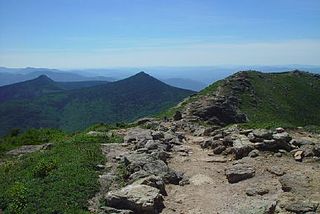
The White Mountains are a mountain range covering about a quarter of the state of New Hampshire and a small portion of western Maine in the United States. They are part of the northern Appalachian Mountains and the most rugged mountains in New England. The range is heavily visited due to its proximity to Boston, New York City, and Montreal.

Mount Monadnock, or Grand Monadnock, is a mountain in the towns of Jaffrey and Dublin, New Hampshire. It is the most prominent mountain peak in southern New Hampshire and is the highest point in Cheshire County. It lies 38 miles (61 km) southwest of Concord and 62 miles (100 km) northwest of Boston. At 3,165 feet (965 m), Mount Monadnock is nearly 1,000 feet (305 m) higher than any other mountain peak within 30 miles (48 km) and rises 2,000 feet (610 m) above the surrounding landscape. Monadnock's bare, isolated, and rocky summit provides expansive views. It is known for being featured in the writings of Ralph Waldo Emerson and Henry David Thoreau.

Mount Washington State Park is a 60.3-acre (24.4 ha) parcel perched on the summit of Mount Washington, New Hampshire, the highest peak in the northeastern United States. Summer seasonal amenities include a cafeteria, restrooms, gift shops, the Mount Washington Observatory and its museum. The historic Tip Top House is located adjacent to the summit building and is open to visitors from early May to early October. The park is accessible by the Mount Washington Auto Road, the Mount Washington Cog Railway, the Appalachian Trail, or numerous other hiking trails from surrounding trailheads including Pinkham Notch, Crawford Notch and the Cog Railway base station.

Kearsarge North is a mountain located about 4 miles (6 km) northeast of North Conway, Carroll County, New Hampshire. The U.S. Board on Geographic Names accepted the name "Pequawket Mountain" in 1915 but it was renamed Kearsarge North in 1957. The Pequawket are a subdivision of the Abenaki people who formerly lived in the area. It is sometimes referred to as Mount Kearsarge, a name officially assigned to a mountain in Merrimack County.
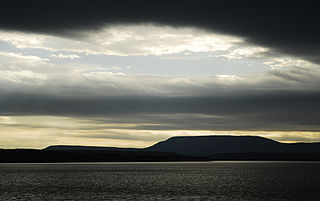
Located near Dardanelle, Arkansas and rising about 1,350 feet (410 m) above the mountain valleys of west-central Arkansas to an elevation of about 1,755 feet (535 m) above sea level, Mount Nebo has views of 34,000 acres (140 km2) Lake Dardanelle, the Arkansas River and the surrounding mountain ridges. Atop this biblically named plateau is Mount Nebo State Park. Developed as a resort area in the late 19th century, it became a state park in 1928, its early development spearheaded by the Civilian Conservation Corps. Park activities include hiking, camping, and other outdoor pursuits.

Table Rock State Park is a 3,083-acre (12.48 km2) park at the edge of the Blue Ridge Mountains in northern Pickens County, South Carolina. The park includes Pinnacle Mountain, the tallest mountain totally within the state.
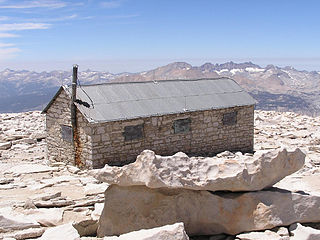
The Smithsonian Institution Shelter, also known as the Mount Whitney Summit Shelter and the Mount Whitney Hut, was built in 1909 on the summit plateau of Mount Whitney, in the Sierra Nevada within Sequoia National Park, in California. It is the highest permanent building in the Contiguous United States.
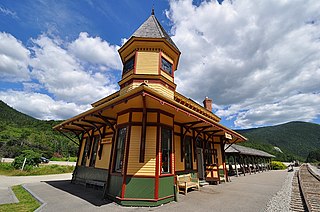
Crawford Depot, also known as Maine Central Passenger Railway Station, is a historic passenger railroad station at the top of Crawford Notch in the Bretton Woods area of the town of Carroll, New Hampshire. Built in 1891, it is a surviving emblem of the importance of the railroad in the area's history as a tourist destination, and is one of the finest examples of Queen Anne railroad architecture in northern New England. Now home to a visitors center operated by the Appalachian Mountain Club, it was listed on the National Register of Historic Places in 1982. It is also the northern terminus of most trains on the "Notch Train" service of the Conway Scenic Railroad.
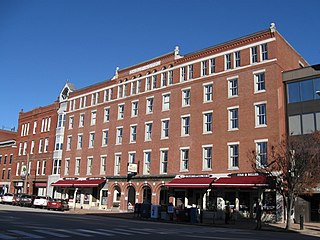
The Eagle Hotel is a historic hotel building at 110 North Main Street in Concord, New Hampshire. Built in 1851, it has been a prominent local landmark since then, and a meeting place for state politicians, given its location across the street from the New Hampshire State House. The building was listed on the National Register of Historic Places in 1978.

The Weeks Estate is a historic country estate on U.S. Route 3 in Lancaster, New Hampshire. Built in 1912 for John Wingate Weeks, atop Prospect Mountain overlooking the Connecticut River, it is one of the state's best preserved early 20th-century country estates. It was given to the state by Weeks' children, and is now Weeks State Park. It features hiking trails, expansive views of the countryside from the stone observation tower, and a small museum in the main estate house. A small portion of property at the mountain summit was listed on the National Register of Historic Places in 1985.
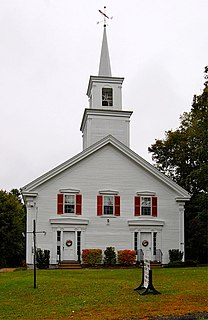
Tuftonboro United Methodist Church is a historic Methodist church on New Hampshire Route 171 in Tuftonboro, New Hampshire. Built about 1853, it is one of the finest examples of ecclesiastical Greek Revival architecture in New Hampshire's Lakes Region. It was added to the National Register of Historic Places in 1997.
The Mount Washington Observatory (MWObs) is a private, non-profit scientific and educational institution organized under the laws of the state of New Hampshire. The weather observation station is located on the summit of Mount Washington in New Hampshire. The Observatory's mission is to advance understanding of the natural systems that create the Earth's weather and climate, by maintaining its mountaintop weather station, conducting research and educational programs and interpreting the heritage of the Mount Washington region. The first regular meteorological observations on Mount Washington were conducted by the U.S. Signal Service, a precursor of the Weather Bureau, from 1870 to 1892. The Mount Washington station was the first of its kind in the world, setting an example followed in many other countries.
Sterling District No. 5 Schoolhouse is a historic school building located at Sterling in Cayuga County, New York. It was built about 1853 and is a two-story hewn timber frame building with a front-facing gable roof, built above a mortared rubble stone foundation. It is rectangular in shape and measures 28 feet by 38 feet. It was used as a school into the 1950s. It has since been used by the Sterling Historical Society for museum display space and as the Town Hall.

Garrison Hill Tower is a 76-foot-tall (23 m) observatory atop Garrison Hill in Dover, New Hampshire, United States. The current tower, made of iron and painted green, was built in 1993 and is the third tower to exist on the hill. The park in which it stands is listed on the National Register of Historic Places.
The Stone Jail Building and Row House are two adjacent stone buildings located on Water Street in Tonopah, Nevada. The jail was built in 1903 and the adjacent row house in 1908. Both building were at one time used as a brothel. The buildings were added to the National Register of Historic Places in 1982.

The Amory Ballroom is the only surviving remnant of a large summer estate house off Old Troy Road in Dublin, New Hampshire. Built in two stages, it is an architecturally distinctive reminder of the community's early 20th-century period as a summer resort area. The building was listed on the National Register of Historic Places in 1985.

The Goodall-Woods Law Office is an historic former office building on United States Route 302 in Bath, New Hampshire. The modest two-story brick building, now a private residence, was built in 1816 by Ira Goodall, and is an unusual local example of Federal architecture. It is particularly distinctive for its two-story rounded bay, which projects from the front. The building was listed on the National Register of Historic Places in 1980.
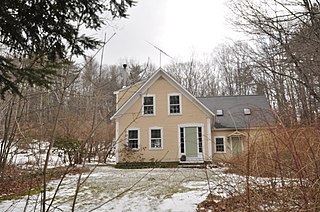
The Jabez Townsend House is a historic house at the southwest corner of Hancock and Cherry Hill Roads in Harrisville, New Hampshire. Built in 1853, it is a good local example of a rural Greek Revival farmhouse. The house was listed on the National Register of Historic Places in 1988.






















